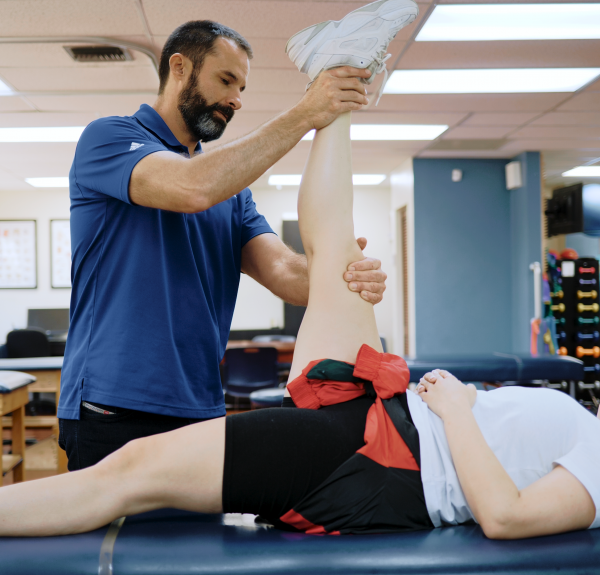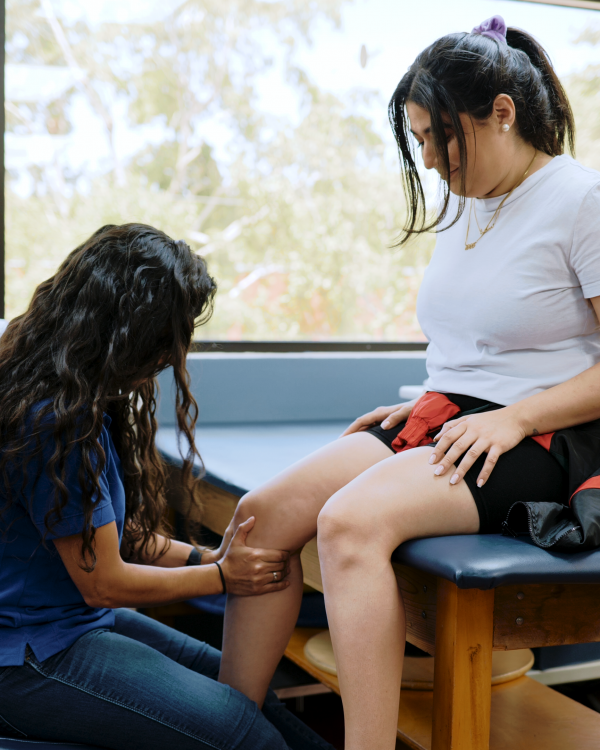So what happens next?
While surgery may sometimes be necessary depending on the type and location of the tear, this is not always the case. In fact, studies have shown that, in particular with degenerative tears, physical therapy can be just as effective in reducing pain and improving knee function! In cases where surgery is ultimately required, either due to the type of tear or because conservative treatment was not enough to resolve your symptoms, our physical therapists can help guide your recovery.
Following a thorough evaluation which includes a detailed history and special tests, our therapists will devise an individualized program alongside you to help you reach your goals. Treatment can consist of various techniques, including:
- Joint mobilizations and soft tissue manipulation techniques to reduce swelling and restore range of motion
- Modalities such as ice, heat, and electrical stimulation which can decrease pain and improve muscle function
- Therapeutic exercises to strengthen the muscles of your core, hip, thigh, and ankle in order to reduce the amount of stress on your meniscus and provide additional stability. As you progress through your rehab so will your exercise program to help ensure you are able to return to your daily and recreational activities.
If you’ve recently suffered from a meniscus tear, or have knee pain in general, contact us for an evaluation and we will help you progress to your best!


